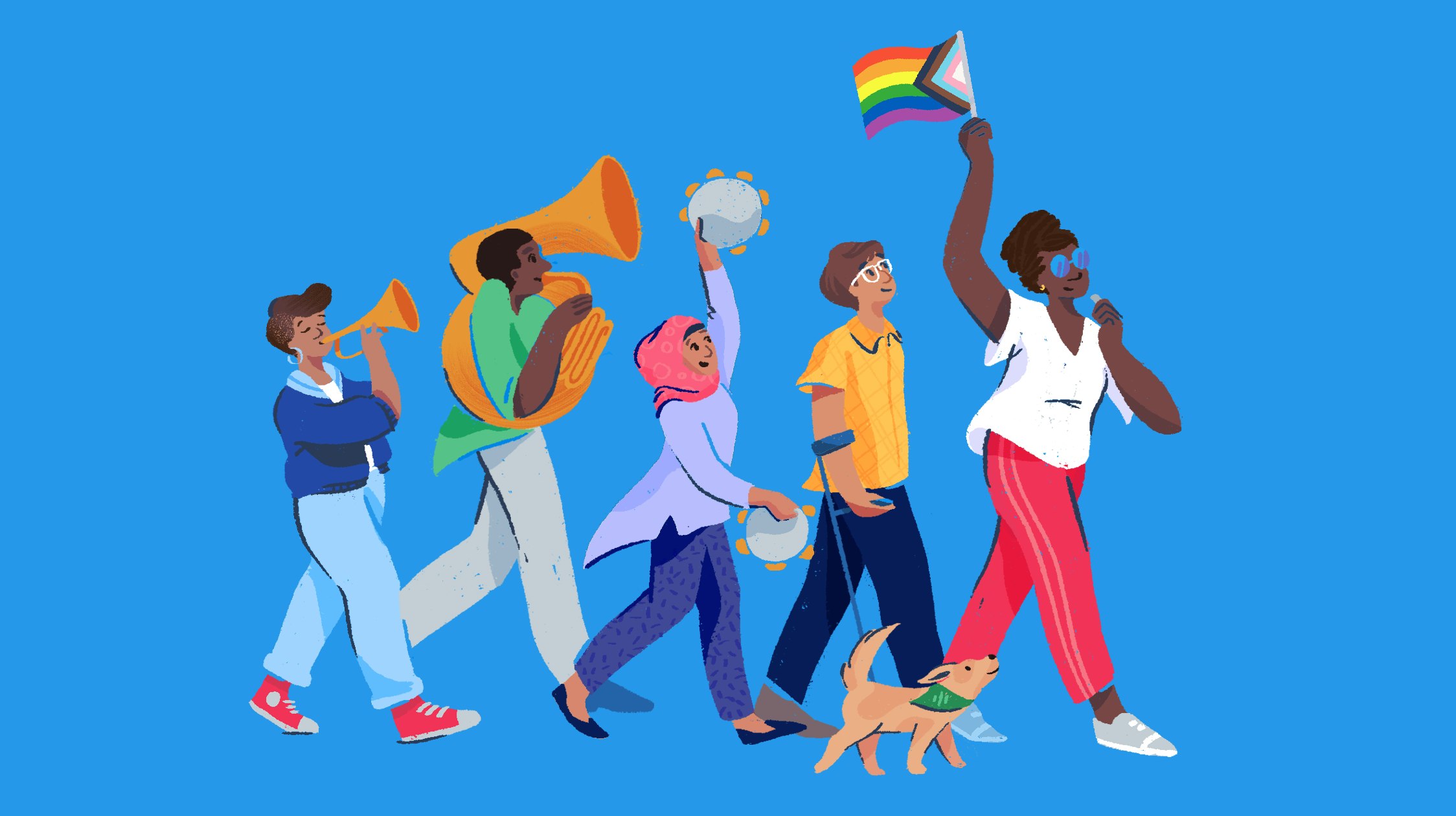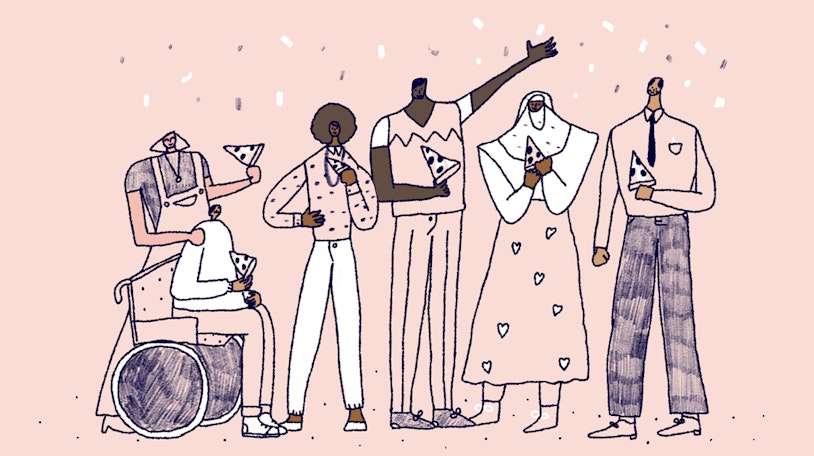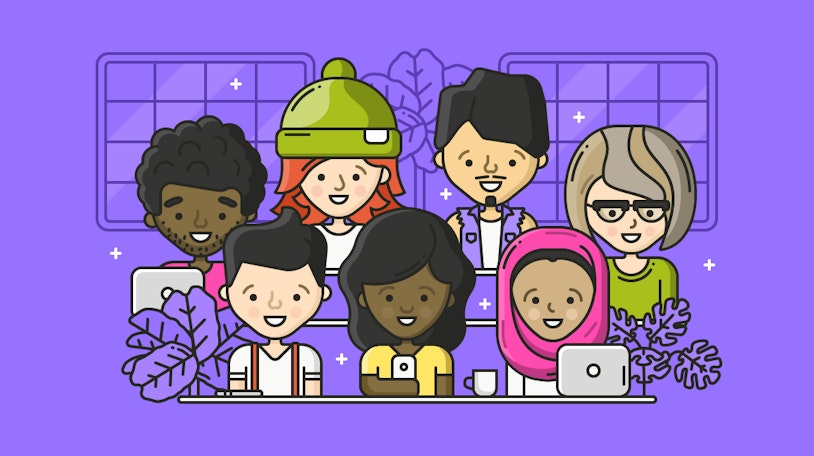It’s been nine months since we last reported on the state of Diversity and Inclusion at Help Scout, and we’re excited to provide an update on where we stand as of April 2019.
We’re starting to see some positive changes over time, as well as areas where we still struggle. We love that sharing this information helps our company stay accountable, transparent and committed to doing the work.
What we’ve been working on
Diverse teams don’t happen by accident. We’ve prioritized a number of initiatives that we believe have led to the positive changes we’ve witnessed:
We continue to 100% source candidates from underrepresented groups for engineering, design and product roles. By proactively diversifying the candidate pool with incredible talent, this tactic has been one of the biggest contributing factors to increasing representation across race and gender on these teams.
We’ve worked hard to standardize our interview process, specifically around asking structured behavioral questions — i.e., asking the same questions of every candidate for a given role and focusing on their past behaviors. Studies show that when you ask every candidate for a particular role the same set of questions, it’s a much fairer interview process and helps mitigate unconscious bias.
We are intentional around our new hire onboarding process and added a separate presentation about diversity and inclusion at Help Scout that helps set the tone for our company values and practices.
Emily Triplett Lentz, our Content Strategy Lead, audited our public-facing content for inclusivity, to ensure the language across our website is as welcoming to everyone as possible.
We invited two amazing guest speakers to talk to us over Zoom about excellent topics — Jennifer Kim went over unconscious bias, and Jessie Wusthoff introduced us to ideas around disability allying. We will also have Jason Wong speak to us in the coming month about bootstrapping inclusion and his experience as an engineering leader at Etsy.
Lastly, we’ve updated our parental leave policy. For years, Help Scout offered 12 weeks of paid leave for primary caretakers and 4 weeks of paid leave for secondary caretakers. That policy was noninclusive in its assumptions about what families look like, and it was counterproductive to retaining women, who leave industries like tech at twice the rate of their male counterparts. Research shows that the more parental leave fathers take, the more likely mothers are to return to work full time. A gender-neutral leave policy allows families to take parental leave equitably, boosts employee retention, and demonstrates our commitment to inclusivity. Our new policy is 12 weeks of paid leave for all new parents, including those who adopt and foster.
The demographic survey
We’ve adopted Culture Amp — a platform for collecting, understanding and acting on employee feedback — as our surveying tool. It helps automate and optimize our process, which will allow us to conduct this survey twice a year going forward for more accurate reporting.
Culture Amp comes with a demographic and inclusion survey template that we customized to ensure we asked the same questions as last year, as well as new questions around fairness, voice and diversity. Collecting more data around these topics only increases our awareness of how our team is feeling and whether we’re missing anything bubbling under the surface.
The data is in …
First and foremost, we’re working toward building a diverse team because it’s the right thing to do, and it’s in line with our values as a company.
Like any good business, we also inform our decisions with data — and the data about diverse teams is undeniable. Diverse companies — representing different backgrounds, identities and perspectives — are smarter, more empathetic, and more financially successful.
As we work to increase the presence of underrepresented groups at Help Scout, sometimes people ask: When do you stop? The truth is that there is no glass ceiling to this work — a company can’t check a box and be finished with diversity and inclusion. While we’re informed by and motivated to hit certain percentage goals, there isn’t a number a company should reach to consider themselves “done.”
How we look at the company level, as of April 2019
The survey had a 90% participation rate.
Gender — company-wide
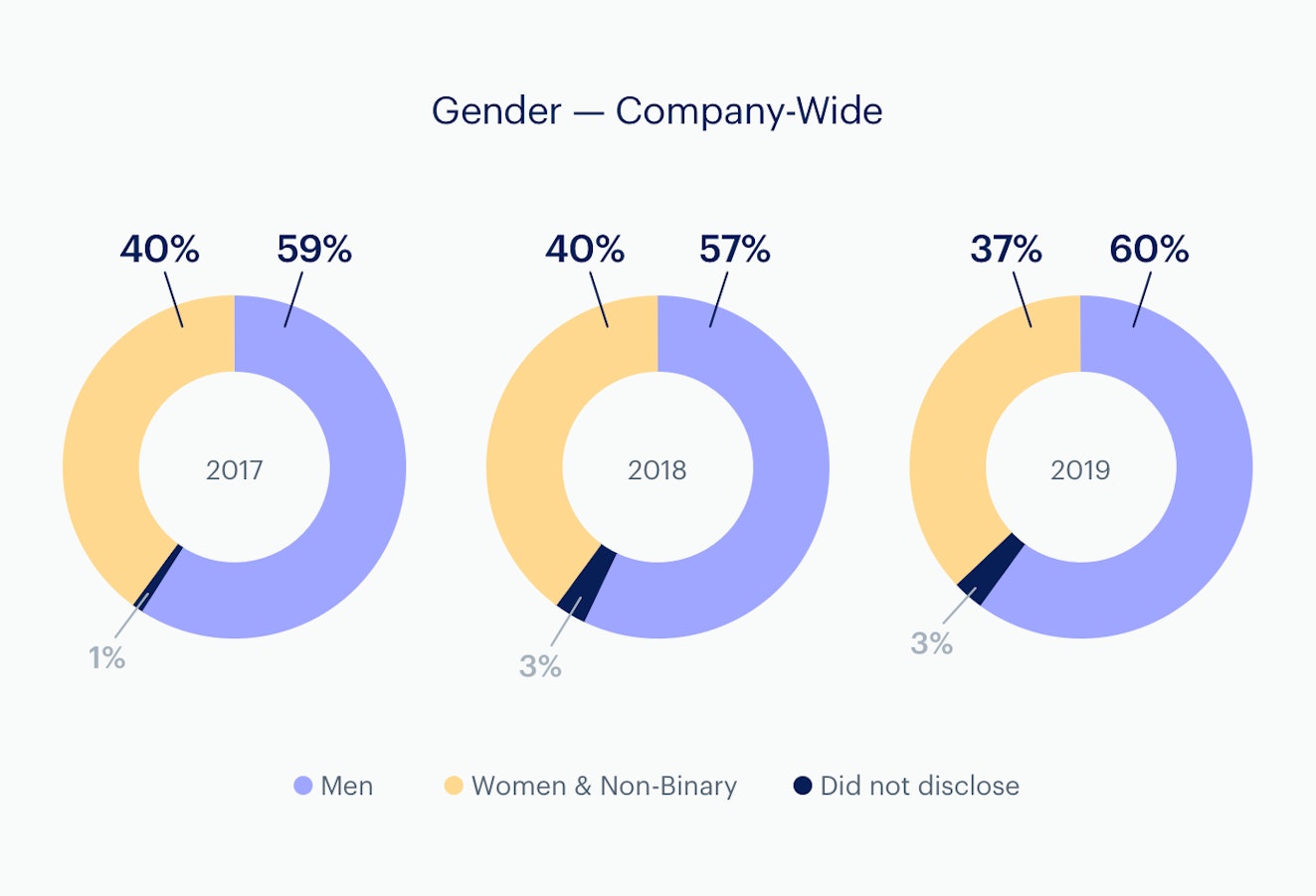
We moved ever so slightly away from gender parity at the company level, but we’ve hired several new people who keep us at around the same gender breakdown as last year.
We’re working to get closer to company-wide gender balance, but we’re prioritizing how gender diversity looks at the team level, where some discrepancies appear. In other words, a company could claim to be 50/50 gender balanced, but perhaps all of the women are on the marketing and support teams — we want to avoid vanity metrics like those.
“Do you identify as neuroatypical?”
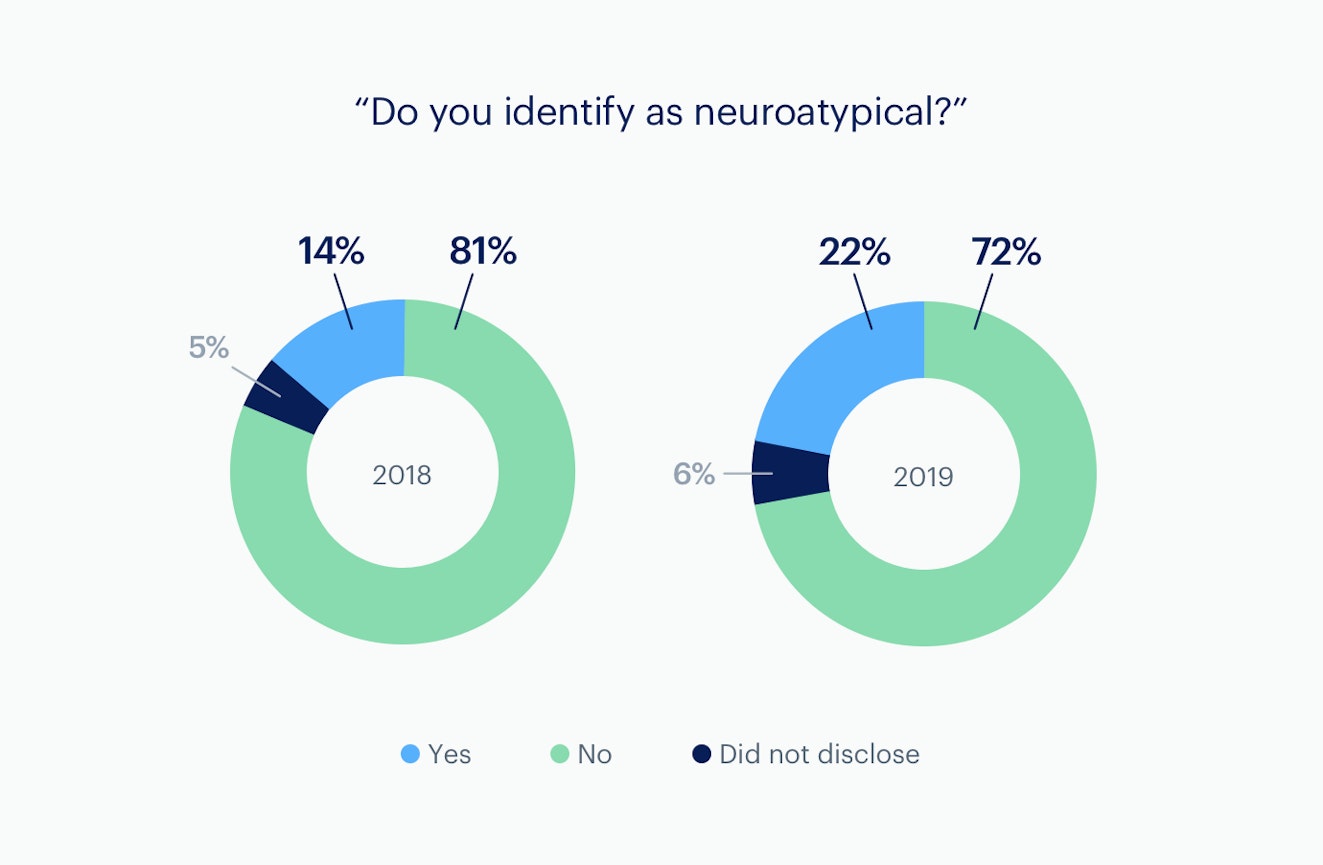
Asking whether our teammates identified as neuroatypical was new last year, and we plan to make it a recurring question. The percentage of teammates who identify as neuroatypical rose by 8% — perhaps due in part to a decreasing stigma around mental health at our company and, we hope, in general.
Parent/legal guardian status
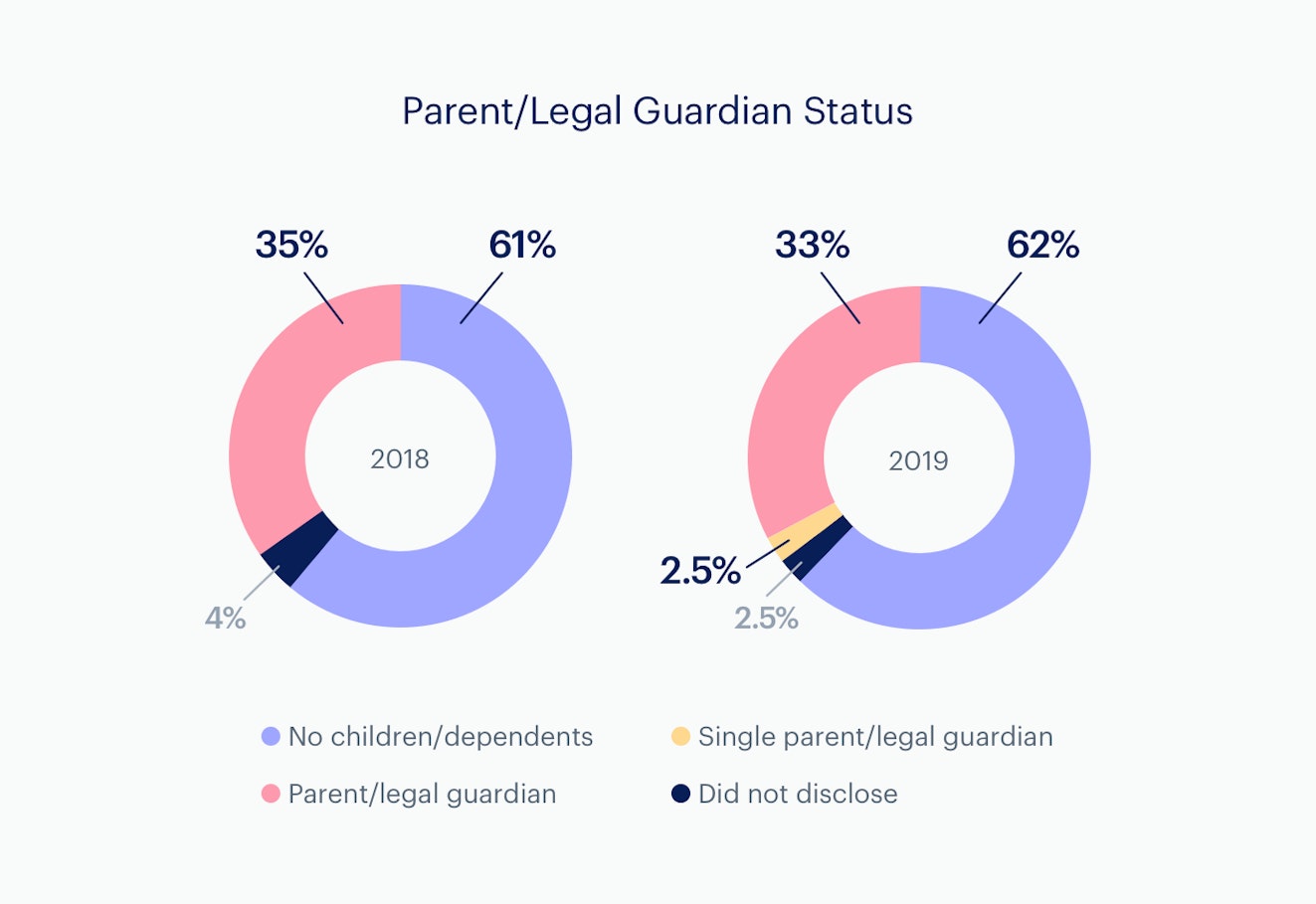
The percentage of teammates with children remained about the same, year over year.
“Do you have a physical disability?”

The percentage of teammates with physical disabilities dropped slightly, from 3% in 2018 to 1% in 2019.
Progress
Perhaps our biggest progress marker this year has been a leadership team where women are the majority. Yes, you read that right! Our leadership team is 62% women — we’re proud of that.
Gender — team leads

Nine months ago, we learned our company was 82% white. Our current survey shows we’ve moved to 78% white.
Race — company-wide

We’ve increased representation around race for the whole company. We moved from 3% to 5% for Black/African-American representation and from 6% to 12% for Latinx folks. (For context, Ellen Pao's Project Include was helping companies get to 10% Black/African American and 10% Latinx representation, with the ultimate goal to reflect the racial makeup of the American workforce — 13% black; 17% Hispanic).
Sexual orientation — company-wide
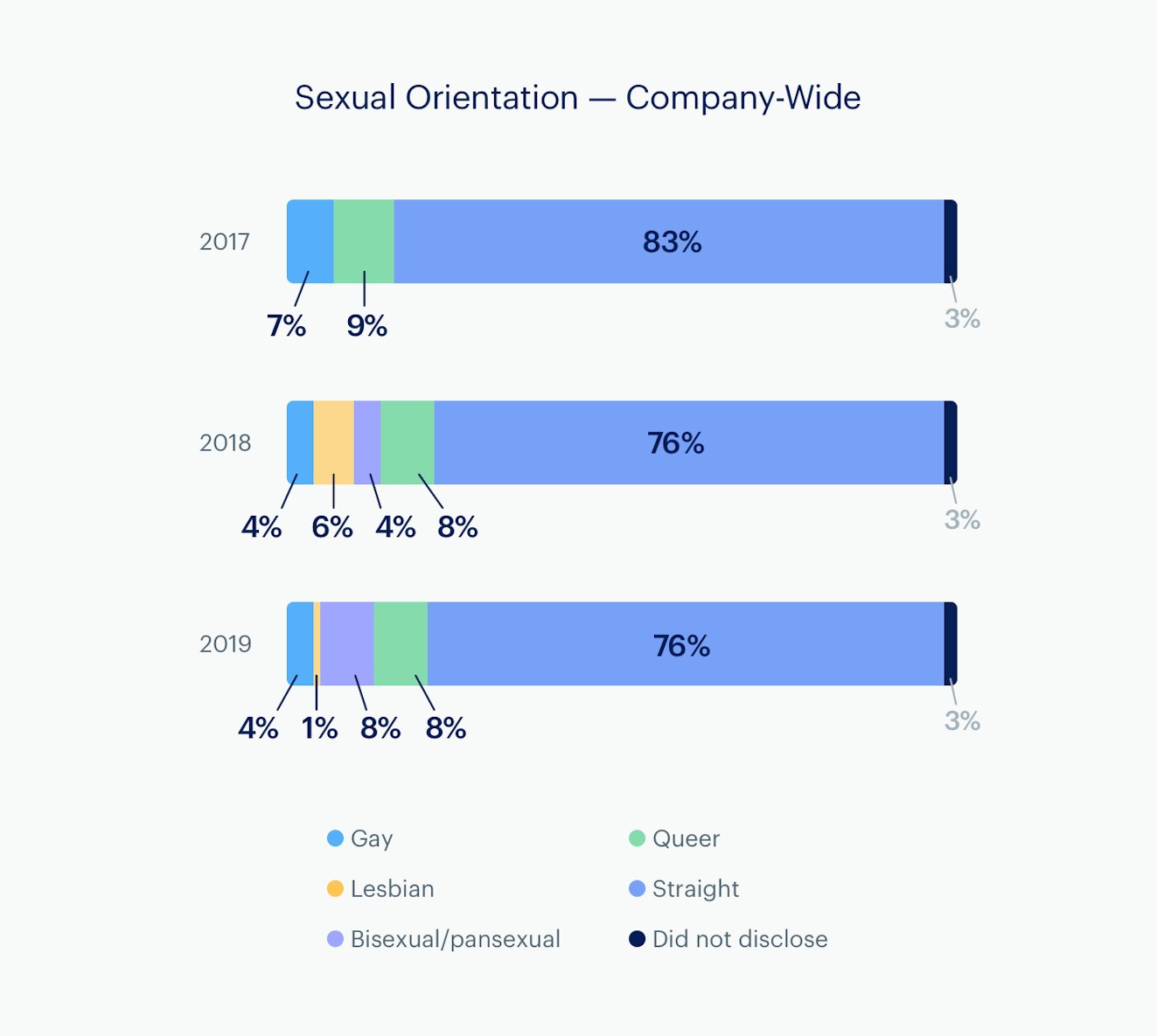
About 20% of Help Scout identified as part of the LGBQ community, which is up a tiny bit from last year.
“Do you identify as transgender?”
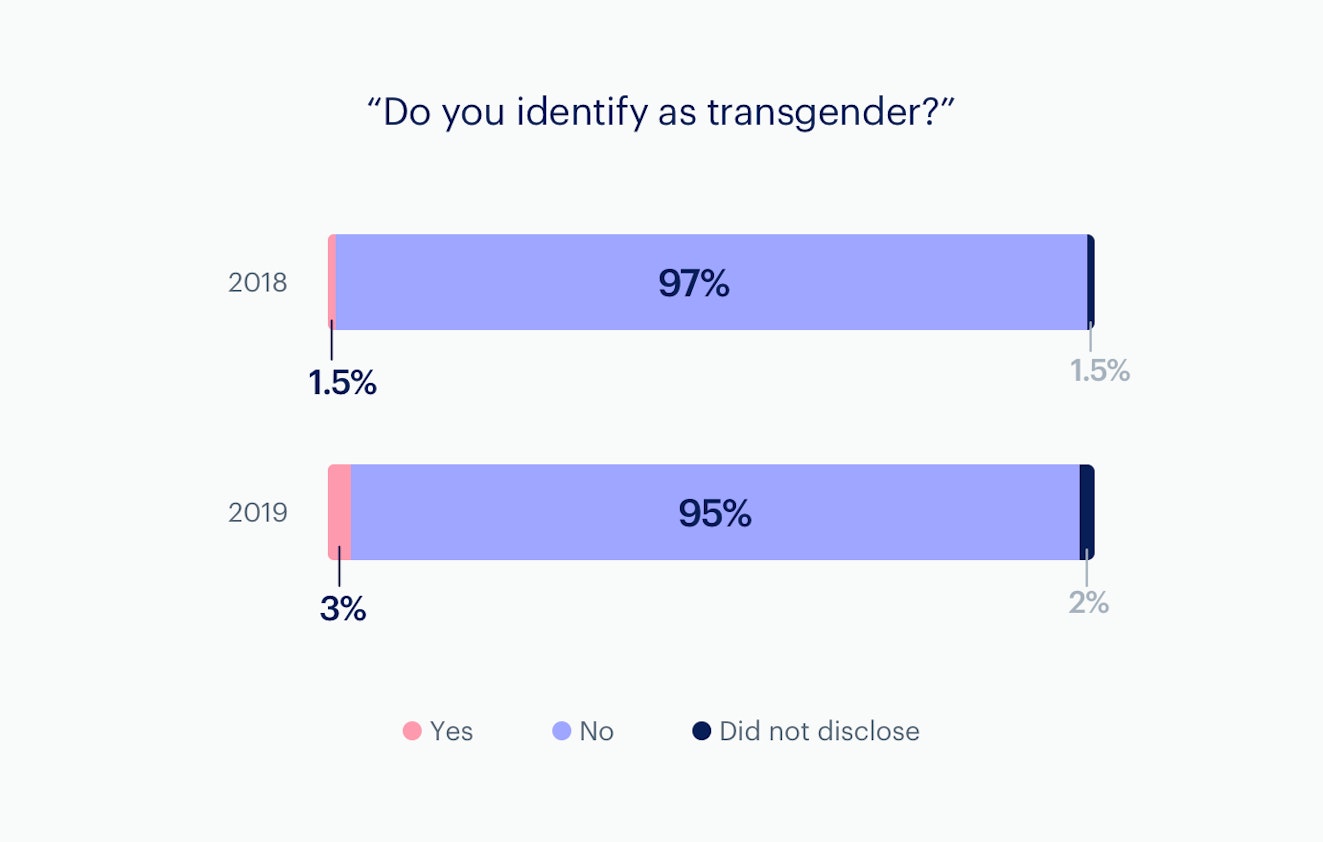
Our transgender representation increased as well, from 1% in 2018 to 3% in 2019.
Where we can improve
Gender Engineering/Design/Product teams

We still have a long way to go to get closer to gender parity on our Engineering, Product and Design teams. The data took a small dip at the time of the survey, but since then we’ve hired three more women for our Engineering team, so it’d be safer to say we’ve stayed about the same.
Age — full team
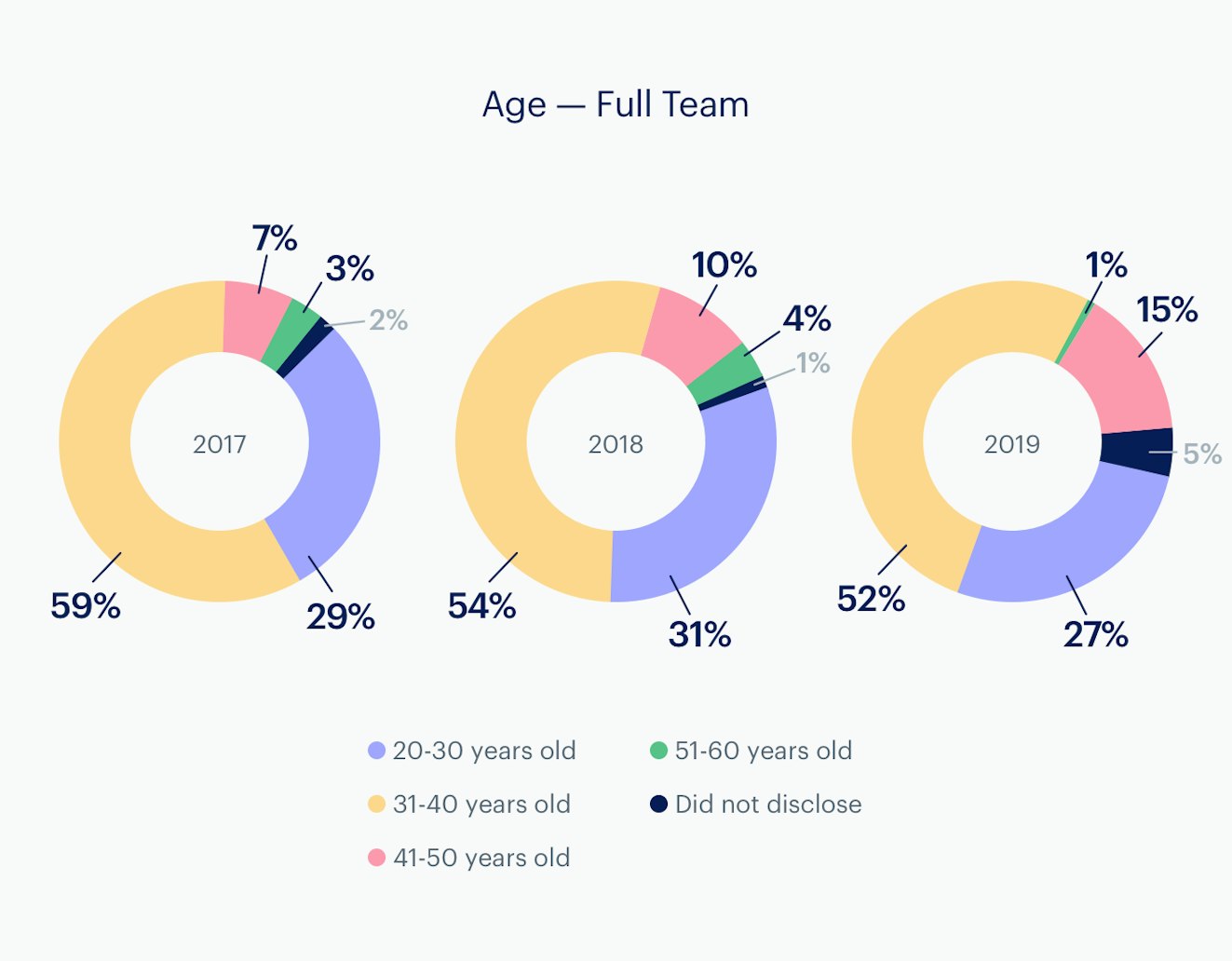
Ageism in the workplace and specifically in the tech industry is alive and well. A 2017 survey of 1,011 tech workers found that 46% of respondents said the average employee age at their company was between 20 and 35.
We’re faring slightly better, with 80% of our teammates falling in the 40-and-younger age group and 16% identifying as 41 and older. We plan to include more training around age bias in our hiring process to move the needle here.
Inclusion questions and more
Just as we did last year, we asked our team the degree to which they feel like they belong, can be their authentic selves, and feel their opinions are valued. By using Culture Amp, we were also able to expound on these topics and include new questions around fairness, voice and diversity. Specifically, some new questions we asked were:
How important is diversity to you?
On a scale of X (strongly disagree) to Y (strongly agree), do you feel that Help Scout values diversity?
On a scale of X (strongly disagree) to Y (strongly agree), do you feel that Help Scout builds teams that are diverse?
The responses and comments were enlightening! We were happy to see that 88% of the company either agreed or strongly agreed that diversity was important to them, and that 96% either agreed or strongly agreed that diversity matters to Help Scout.
Where things got interesting was around Help Scout building diverse teams, where only 73% of respondents either agreed or strongly agreed. The comments revealed that our teammates care deeply about diversity and believe that the company does as well, but that there’s a struggle to put those feelings into practice.
Leaning into discomfort
As a company staffed by a majority of white people (myself included), I’ve been thinking a lot about this idea:
When you’re accustomed to privilege, equality feels like oppression.
Again, the data supports that diverse teams are better for business. But we’re fighting against centuries of oppression as we try to make Help Scout, the tech industry, and society more equitable — and that can make people uncomfortable.
Each time we’ve shared our demographic data and our learnings, a few people criticize our process or beliefs. They claim we’re giving preferential treatment, or they declare that race or gender shouldn’t apply to the hiring process.
If we lived in a world free of bias and bigotry, then factors like race and gender wouldn’t apply to our hiring process — but we don’t live in that world yet.
Truth be told, we’ve wrestled with some of that same discomfort internally — and the best way we’ve found to work through that discomfort is to lean into it. If you’re unconvinced that gender, racial, and other biases exist and negatively impact people and organizations, one good place to start is by taking a few of the tests that Harvard’s Project Implicit offers — then take it upon yourself to research those subjects further, learn what you can, and resolve to be open-minded about how we can work together toward making the workplace — and by extension, the world — more equitable for everyone.


